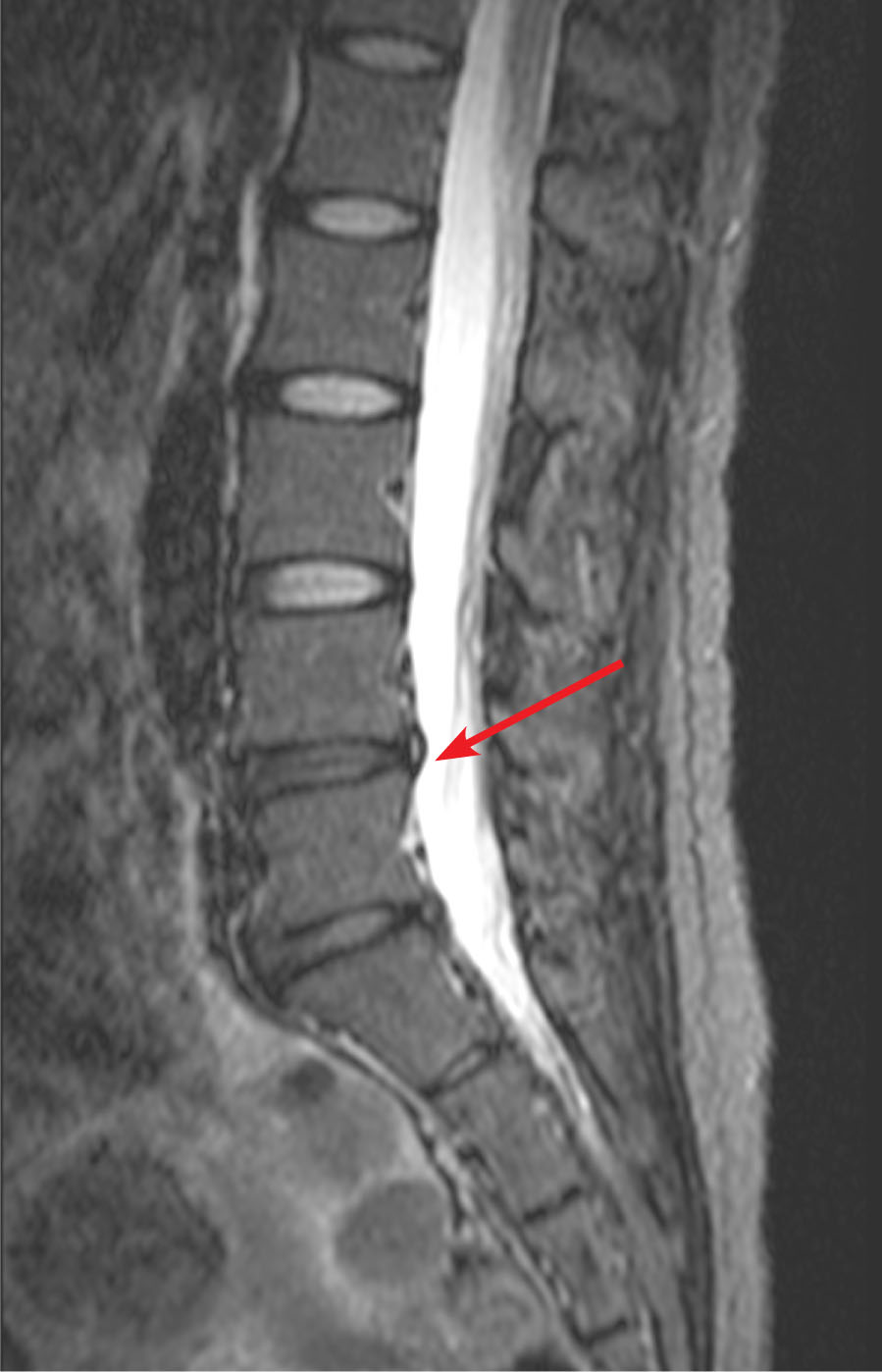What is disc desiccation?
Disc desiccation or dehydration means loss of water in one or more discs that separate vertebrae in the spine [1].
When a disc dries up, the lost water is replaced by the connective tissue fibers, which makes the disc less elastic and thus more prone to damage.
What are symptoms of disc desiccation?
Disc desiccation by itself does not cause any symptoms, but it makes the spine more rigid, that is less able to bend.
Desiccated discs that bulge, herniate or lose height can pinch the spinal nerve roots, which can cause pain in the neck, lower back, arm or leg.
What causes disc desiccation?
Disc desiccation can result from [1,3]:
- Normal aging process
- An acute or chronic injury
- Degenerative disc disease
How is disc desiccation diagnosed?
On a magnetic resonance image (MRI), disc desiccation appears as a “dark disc” or “black disc” [1].
Disc desiccation by itself does not result in a loss of disc’s height [1]. A desiccated disc can have a normal height or, if it is also bulging or herniated, decreased height.

Picture 1. Disc desiccation (An MRI with a red arrow pointing to a disc that is darker than the discs above it)
(source: Degruyter.com, CC license)
What is diffuse disc desiccation?
The term diffuse disc desiccation is dehydration that has uniformly spread through a disc. “Diffuse” does not mean better or worse.
What is mild, moderate or severe disc desiccation?
Mild, moderate and severe desiccation are stages of disc dehydration, which may or may not be related to the severity of the symptoms.
What is disc desiccation with diffuse disc bulge?
A diffuse disc bulge is an informal term, which usually means a simple disc bulge but some doctors may use it to describe a broad-based herniation.
What is lumbar disc desiccation L4-L5 or L5-S1?
- L4-L5 is the disc between the 4th and 5th lumbar vertebra.
- L5-S1 is the disc between the 5th lumbar and 1st sacral vertebra.
Desiccation of the discs L4-L5 or L5-S1 that is associated with a disc herniation can cause pain in the lower back, buttock or leg, known as sciatica.
What is cervical disc desiccation?
Cervical disc desiccation means dehydration of one or more discs in the neck (cervical) part of the spine.
What is multilevel disc desiccation?
Multilevel disc desiccation refers to the presence of disc desiccation on more than one level of the spine, for example in the disc L4-L5 and L5-S1.
Can disc desiccation be reversed?
Disc desiccation is usually a part of degenerative disc disease, which cannot be reversed [2]. You may be able to slow down the degeneration process by avoiding the repetitive strain of the spine, though [2].
What is the treatment for disc desiccation?
Disc desiccation by itself does not need any treatment. Desiccated discs that collapse or herniate can be surgically removed, either partially or completely. Read more about causes, symptoms, treatment and prevention of a bulging and herniated disc.
- References
- Disc desiccation Radiopaedia
- Can Chiropractic Reverse Cervical Disc Degeneration? SpineUniverse
- Hancock MJ et al, 2010, The Role of Back Injury or Trauma in Lumbar Disc Degeneration: An Exposure-discordant Twin Study PubMed
- Ullrich PF, Pain from degenerative disc disease Spinal-health

